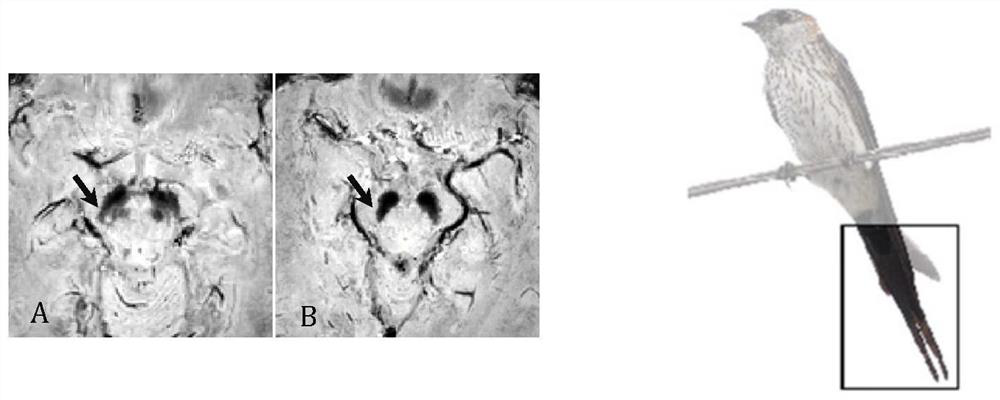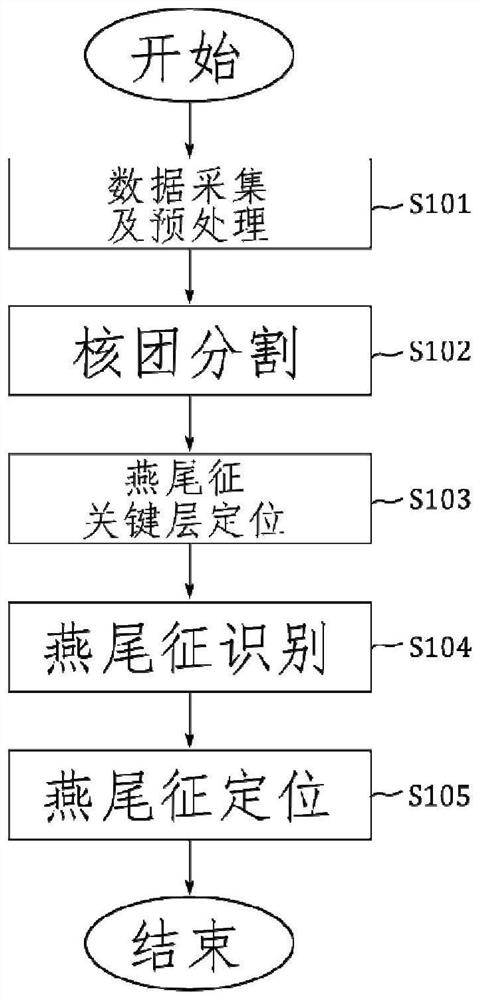Black plastid-1 sign automatic identification method and system of multi-task neural network based on multi-echo GRE sequence
A neural network and automatic identification technology, applied in the field of image processing and medicine, can solve the problems of unavoidable subjectivity, limited application of PD diseases, difficult quantitative measurement, etc., to achieve automatic positioning and accurate discrimination, and improve efficiency and accuracy. Effect
- Summary
- Abstract
- Description
- Claims
- Application Information
AI Technical Summary
Problems solved by technology
Method used
Image
Examples
Embodiment 1
[0042] In this embodiment, the trueSWI modal data generated by the multi-echo GRE sequence is integrated with the doctor's prior knowledge and combined with deep learning technology to identify the substantia nigra body-1 sign with high precision. figure 2 It is a flow chart of the embodiment of the present invention. As shown in the figure, the process of identifying and locating substantia nigra body-1 signs in the present invention mainly includes data collection, data preprocessing, automatic nuclei segmentation, and key areas of nigra body-1 sign identification. Positioning, automatic recognition of substantia nigra-1 signs based on deep learning network, and location of substantia nigra-1 signs specifically include the following steps:
[0043] Step 101, brain magnetic resonance data collection and data preprocessing; specifically include: use 3T magnetic resonance equipment to scan the patient's brain, collect high-resolution brain magnetic resonance data, and reconstru...
Embodiment 2
[0060] In this embodiment, the QSM modal data generated by the multi-echo GRE sequence is integrated with the doctor's prior knowledge and combined with deep learning technology to identify the substantia nigra body-1 sign with high precision. figure 2 It is a flow chart of the embodiment of the present invention. As shown in the figure, the process of identifying and locating substantia nigra body-1 signs in the present invention mainly includes data collection, data preprocessing, automatic nuclei segmentation, and key areas of nigra body-1 sign identification. Positioning, automatic recognition of substantia nigra-1 signs based on deep learning network, and location of substantia nigra-1 signs specifically include the following steps:
[0061] Step 101, brain magnetic resonance data collection and data preprocessing; specifically include: use 3T magnetic resonance equipment to scan the patient's brain, collect high-resolution brain magnetic resonance data, and reconstruct t...
Embodiment 3
[0077] The difference between this embodiment and Embodiment 1 is that the SWI modal data generated by the multi-echo GRE sequence is integrated with the doctor's prior knowledge, and combined with deep learning technology to perform high-precision identification of the substantia nigra-1 sign; specifically Process is identical with embodiment 1.
PUM
 Login to View More
Login to View More Abstract
Description
Claims
Application Information
 Login to View More
Login to View More - R&D
- Intellectual Property
- Life Sciences
- Materials
- Tech Scout
- Unparalleled Data Quality
- Higher Quality Content
- 60% Fewer Hallucinations
Browse by: Latest US Patents, China's latest patents, Technical Efficacy Thesaurus, Application Domain, Technology Topic, Popular Technical Reports.
© 2025 PatSnap. All rights reserved.Legal|Privacy policy|Modern Slavery Act Transparency Statement|Sitemap|About US| Contact US: help@patsnap.com



